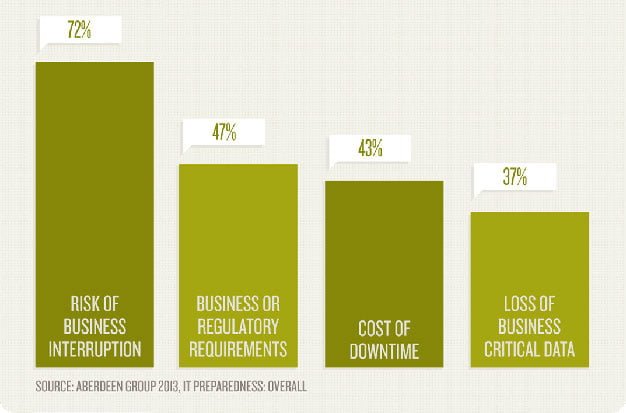Be sure your technology is prepared to survive failure or disaster.
by Gregory P. Scasny
In the event of hardware failure, file loss, theft or even natural disaster, it's imperative that your business is able to resume without delay, in order to sustain productivity, revenue, customer satisfaction and success. A Recovery Time Objective (RTO) plus business continuity and backup plans can make downtime a thing of the past.
Everyone knows the necessity of a backup for mission critical data and applications; backup has been a baseline IT function from the first time computers were fired up. But what happens if your mission-critical systems go down? Do you know how long it will take to get those systems back online and functioning? The average business loses more than $160,000 a year from lost productivity during downtime.
Recovery Time Objective, or RTO, is a term used to describe how fast a downed application, or server, can be restored to a functioning level. With many businesses having terabytes of data, it can take days to weeks to retrieve that data, depending on your method of backup.

Industry estimates reveal that 40 percent of organizations without business continuity and recovery plans will go out of business within a few years of a major disaster. According to a 2013 study by the Aberdeen Group, risk of business interruption is the key market driver for business continuity and disaster recovery plans, with business/regulatory requirements, cost of downtime and loss of business critical data ranking high as well.
RTO goes beyond data restoration, it also includes hardware, phone systems, etc., which is why it's essential to have end-to-end business continuity solution and contingency plans in place.
The potential for technological misfortune is somewhat limitless. What happens if you lose a server, or all of your servers? How long will it take to get replacement hardware? Can you restore all of your backups, assuming they are offsite, to dissimilar hardware? What is the maximum amount of time/data that you can lose? Where and how will employees work if the office is uninhabitable? How will customers communicate with your business if email or phone systems are down?
Luckily there are solutions to all of these potentially disastrous situations. Properly designed business continuity and contingency plans can take an event that could put most companies out of business and make them a minor inconvenience.
New cloud platforms are designed for today's “always-on” business environment, virtually eliminating data loss, keeping applications running, and ensuring that your IT infrastructure doesn't fail. These platforms mirror your entire business in the cloud, allowing for simple data restoration from any device.
When email servers go down, having an “emergency inbox” is like having a redundant email system running in the background, allowing users to continue to access their email. For telephone systems, Voice over Internet Protocol (VoIP) services can be designed to handle calls from your business' phone number during a crisis, allowing staff to answer calls anywhere as long as they have an Internet connection and a computer.
For true mission-critical applications, there are services that will run a “hot spare” of a server, which is used as a failover mechanism to provide reliability in system configurations. All data is automatically synched to the hot spare and is available as a backup. These services are not only robust, but also affordable to deploy and help to assure your business is prepared to survive nearly any potential disaster. Business owners should meet with their IT teams or IT service partners regularly to discuss plans for RTO of all business applications, services and communications. The plan should be tested annually. The more proactive and informed your business is about your RTO, business continuity and contingency plans, the more prepared everyone will be if disaster strikes. This preparedness will maintain both uptime and your bottom line.
Gregory P. Scasny is a co-founder of Golden Tech, an IT Management company.



